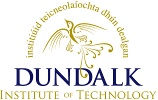Pichon, Céline and Dolbecq, Anne and Mialane, Pierre and Marrot, Jérôme and Rivière, Eric and Goral, Monika and Zynek, Monika and McCormac, Timothy and Borshch, Serguei A. and Zueva, Ekaterina and Sécheresse, Francis (2008) Fe2 and Fe4 Clusters Encapsulated in Vacant Polyoxotungstates: Hydrothermal Synthesis, Magnetic, Electrochemical Properties, and DFT calculations. Chemistry - A European Journal, 14 (10). pp. 3189-3199. ISSN 1521-3765
Preview |
PDF
- Submitted Version
Download (1MB) | Preview |
Abstract
While the reaction of [PW11O39]7- towards first row transition metal ions Mn+ under usual bench conditions only leads to monosubstituted {PW11O39M(H2O)} anions, we show that the use of this precursor under hydrothermal conditions allows to isolate a family of novel polynuclear molecular magnetic polyoxometalates (POMs). The hybrid asymmetric [FeII(bpy)3][PW11O39Fe2III(OH)(bpy)2]·12H2O complex (1) contains the dinuclear {Fe(μ-O(W))(μ-OH)Fe} core where one iron atom is coordinated to a monovacant POM while the other is coordinated to two bipyridine ligands. Magnetic measurements indicate that in 1 the FeIII centers are weakly antiferromagnetically coupled (J = -11.2 cm-1, Ĥ = -JŜ1Ŝ2) compared to {Fe(μ-O)(μ-OH)Fe} systems. This is due to the long distance between the iron center embedded in the POM and the oxygen atom of the POM bridging the two magnetic centers but also, as shown by DFT calculations, to the important mixing of bridging oxygen orbitals with orbitals of the POM tungsten atoms. (Hdmbpy)2[FeII(dmbpy)3]2[(PW11O39)2Fe4IIIO2(dmbpy)4]·14H2O (2) (dmby = 5,5’-dimethyl-2,2’-bpy) and H2[FeII(dmbpy)3]2[(PW11O39)2Fe4IIIO2(dmbpy)4]·10H2O (3) represent the first butterfly-like POM complexes. In these species, a tetranuclear FeIII complex is sandwiched between two lacunary polyoxotungstates which are pentacoordinated to two FeIII cations, the remaining paramagnetic centers being each coordinated to two dmbpy ligands. The best fit of the χMT = f(T) curve leads to Jwb = -59.6 cm-1 and Jbb = -10.2 cm-1 (Ĥ = -Jwb(Ŝ1Ŝ2 + Ŝ1Ŝ2* + Ŝ1*Ŝ2 + Ŝ1*Ŝ2*) – Jbb(Ŝ2Ŝ2*)). While the Jbb value is within the range of related exchange parameter previously reported for non-POM butterfly systems, the Jwb constant is significantly lower. As for complex 1, this can be justified considering Few-O distances. Finally, in absence of coordinating ligand, the dimeric complex [N(CH3)4]10[(PW11O39FeIII)2O]·12H2O (4) has been isolated. In this complex, the two single oxo-bridged FeIII centers are very
| Item Type: | Article |
|---|---|
| Uncontrolled Keywords: | Density functional calculations; Hydrothermal synthesis; Magnetic properties; Polyoxometalates; Solution and solid state electrochemistry |
| Subjects: | Science > Chemistry |
| Research Centres: | Electrochemistry Research Group |
| Depositing User: | Nicola Hanlon |
| Date Deposited: | 20 Apr 2011 13:51 |
| Last Modified: | 11 Nov 2014 16:09 |
| URI: | https://eprints.dkit.ie/id/eprint/17 |
Actions (login required)
 |
View Item |
Downloads
Downloads per month over past year

